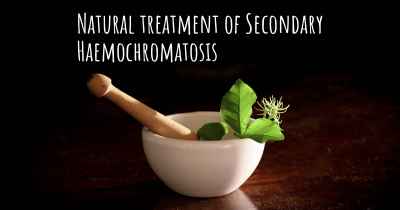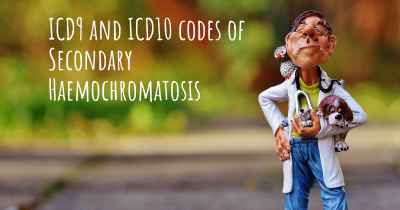Is Secondary Haemochromatosis hereditary?
Here you can see if Secondary Haemochromatosis can be hereditary. Do you have any genetic components? Does any member of your family have Secondary Haemochromatosis or may be more predisposed to developing the condition?

Secondary Haemochromatosis is a condition where excess iron builds up in the body due to another underlying cause, such as chronic liver disease or certain blood disorders. While primary haemochromatosis is hereditary, secondary haemochromatosis is not typically inherited. It occurs as a result of other medical conditions or factors. It is important to identify and treat the underlying cause to manage secondary haemochromatosis effectively.
Secondary haemochromatosis is a condition characterized by excessive iron accumulation in the body, which can lead to various health complications. Unlike primary haemochromatosis, which is primarily caused by genetic mutations, secondary haemochromatosis is typically acquired as a result of other underlying medical conditions or external factors. Therefore, it is not directly hereditary in the same way as primary haemochromatosis.
Primary haemochromatosis, also known as hereditary haemochromatosis, is caused by specific genetic mutations that affect the body's ability to regulate iron absorption. These mutations are typically inherited from one or both parents, making primary haemochromatosis a hereditary condition. However, secondary haemochromatosis is caused by factors unrelated to genetic mutations and can develop in individuals without a family history of the condition.
Secondary haemochromatosis can occur as a result of various underlying conditions, such as chronic liver diseases (e.g., alcoholic liver disease, viral hepatitis, non-alcoholic fatty liver disease), certain types of anemia (e.g., thalassemia, sideroblastic anemia), repeated blood transfusions, or excessive iron supplementation. Additionally, certain rare conditions like porphyria cutanea tarda and African iron overload can also lead to secondary haemochromatosis.
The development of secondary haemochromatosis is influenced by a combination of genetic and environmental factors. While the condition itself is not directly hereditary, some of the underlying conditions that can cause secondary haemochromatosis may have a genetic component. For example, certain forms of anemia can be inherited, and chronic liver diseases may have a genetic predisposition. However, the excessive iron accumulation in secondary haemochromatosis is not directly passed down from generation to generation like in primary haemochromatosis.
It is important to note that secondary haemochromatosis can be prevented or managed by addressing the underlying condition or factor causing the iron overload. Treatment options may include therapeutic phlebotomy (removal of blood to reduce iron levels), iron chelation therapy (medication to remove excess iron), or managing the underlying condition through lifestyle changes or medical interventions.
In conclusion, secondary haemochromatosis is not directly hereditary like primary haemochromatosis. While some of the underlying conditions that can lead to secondary haemochromatosis may have a genetic component, the excessive iron accumulation itself is not passed down from parents to offspring. Understanding the underlying causes and seeking appropriate medical care can help prevent or manage secondary haemochromatosis effectively.








